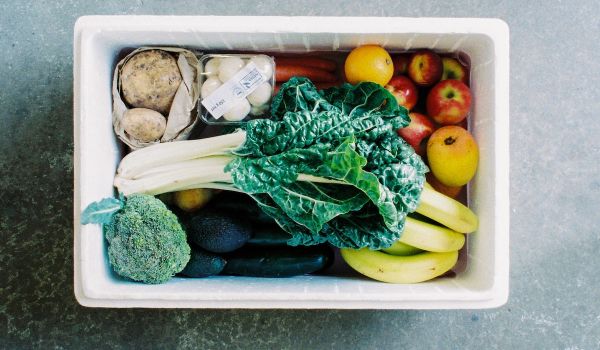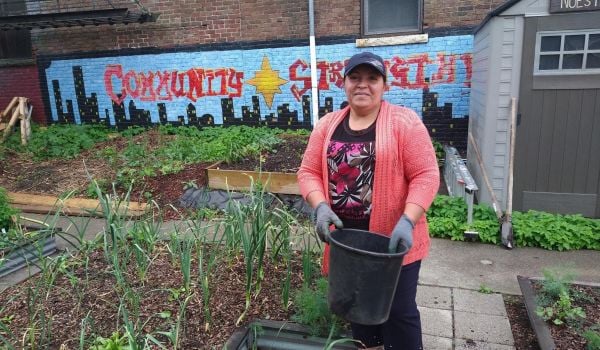For local and regional food systems to work, the land around cities has to grow food.
It sounds obvious, but that’s rarely what actually happens. Most U.S. cities’ perimeters are occupied with industrial feed crops like corn and soy; low-density sprawl housing with 10-acre lawns; and leisure farms, funded by day jobs in the city, that grow little food even for their owners.
Shockingly, somewhere between 20% and 70% of U.S. farms serve primarily as tax-sheltered country homes for people with high-earning day jobs. That probably explains why the median U.S. farmer is a millionaire, and why even small family farmers have a median net worth (after subtracting farm debts) of $889,963, or around the 80th percentile of Americans.
It’s true that most of our food comes from just a few large industrial farms. But there’s more to the problem than agribusiness consolidation or subsidies. Loose property tax breaks for farms are also to blame.
In the U.S., any landowner can anoint themself a farmer for tax reasons, even when they have no intention of doing what farms are supposed to do: grow food. Farm tax breaks are supposed to incentivize private parties to provide a public good – that is, food. But in reality, these programs regularly serve as giveaways to wealthy households who inherited or can afford to buy land.
Loose tax breaks make farmland so valuable as a tax shelter, few of the people who own it are motivated to use it to grow food. As a crop scientist, I think property tax breaks play a bigger role than oft-demonized crop subsidies in underwriting bad agriculture. It’s just easier to vilify subsidies because only a few farms collect them.
With farm property tax breaks, everyone who owns rural property has a chance to defraud the public. Richard England, an economist at the University of New Hampshire, estimates rural communities lose tens of billions of dollars each year to farm tax breaks – much of them fraudulent.
Rises in farmland prices over the last 20 years can’t be explained by increases in production or profitability. They’re most likely driven by wealthy Americans seeking to buy farmland for its value as a tax shelter. This is devastating for our food system. If you ask new farmers what their No. 1 problem getting started is, they don’t say it’s competition from agribusiness. They say land access. This is especially acute in the countryside around cities, where the need to feed an urban population collides with a large upper middle class and the cottagecore imperative to get a little place in the country (usually subsidized by farm tax breaks)”
The cure is simple. States can eliminate farm tax breaks near urban areas – say, within 50 miles of city limits – unless the property owner grows food for human consumption off the farm. Nurseries can also qualify if the public decides that serves their interests. Landowners can still use near-urban acreage for industrial feedstock crops, lawns, or petting zoos if they wish. They simply can’t receive farm tax breaks for them. This simple policy change is so common-sense, it’s sure to raise objections. Let’s try a few.
What about people who already own land and don’t have the capital, skills or time to farm it themselves? They can sell it, donate it or rent it to people who can farm.
What if I can’t find an experienced farmer who’s willing to pay the rent I feel my land is worth? Then you’ll have to adjust your price, take a chance on a beginning farmer, or both.
What will happen to our lovely open spaces without those tax breaks? We can still have open spaces that exist to be pretty. They’re called parks. If you want parks, pay for parks.
I own a tract of forest that qualifies for farm tax breaks. We’d have to cut all the trees down to grow food. Is that what you want? Forests are great for food production. We have native walnuts, hickories, edible acorns, disease-resistant hybrid chestnuts, pawpaws and hazelnuts. Pecans grow surprisingly far north: hardy cultivars grow up to Iowa and southern New England. Owners of woodlots on urban outskirts can manage them for food production, or move them along to someone else who can.
Won’t this make agriculture worse because farmers are forced to farm for profit? No. Bad farming practices are usually about convenience, not profit. For example, cover crops are lucrative. They save so much time, equipment and fertilizer costs that farmers often make a profit from them in the first season. So why do so few farmers use them? Because they take some time and practice to figure out. That’s not a deal-breaker: Investing time into good practices is what professionals do. Amateurs don’t. And it’s OK to expect professionalism from farmers who receive public support.
Has anyone succeeded at tightening up farm property tax breaks? Yes. Investigations by the Lexington Herald-Leader found Kentuckians were losing $45 million a year to tax breaks for “farms” that didn’t farm. Kentucky’s pseudo-farms were concentrated outside the limits of major local cities like Lexington. The loss of property taxes impacted schools and local services in these rural and semi-rural areas. The state had to send money to make up these local shortfalls. In effect, urban homeowners and renters subsidized country estates for wealthy folks in the exurbs.
Loose farm property tax breaks drive rural land prices up. How? They feed a booming market for exurban development. Exurban housing and leisure farms push working people and farms out of the countryside, replacing them with leisure properties. The only way to stop this is make leisure property owners pay their taxes: to pay the full price for all the space they’re taking up. Tightening up farm tax breaks is good for everyone: local budgets, working farmers, and working stiffs in the city who’ve been forced to make up the tax shortfalls by paying more.
How do I fight for these programs? Sunlight is the best disinfectant. When citizens succeed at rolling back overly lax farm tax breaks, it starts with loudly documenting the problem. Work with local and state-level journalists. Find whether land listed as “farm” actually grows food. Don’t get bogged down in fighting over who counts as a “real” farmer: just focus on whether or not a given property grows food. Be ready for a state-level political fight: farm tax breaks are passed at the state level, and take statewide organizing to fix. And of course, expect opposition. Rich people don’t like having their dirty laundry aired.
Fixing farm tax breaks is hard. But it’s worth it. Working farms mean functional local food systems, food security, balanced state budgets and rural jobs. That’s worth fighting for.
Dr. Sarah Taber is a crop scientist and former farmworker. She lives and works in Fayetteville, North Carolina.





_600_350_80_s_c1.jpg)










